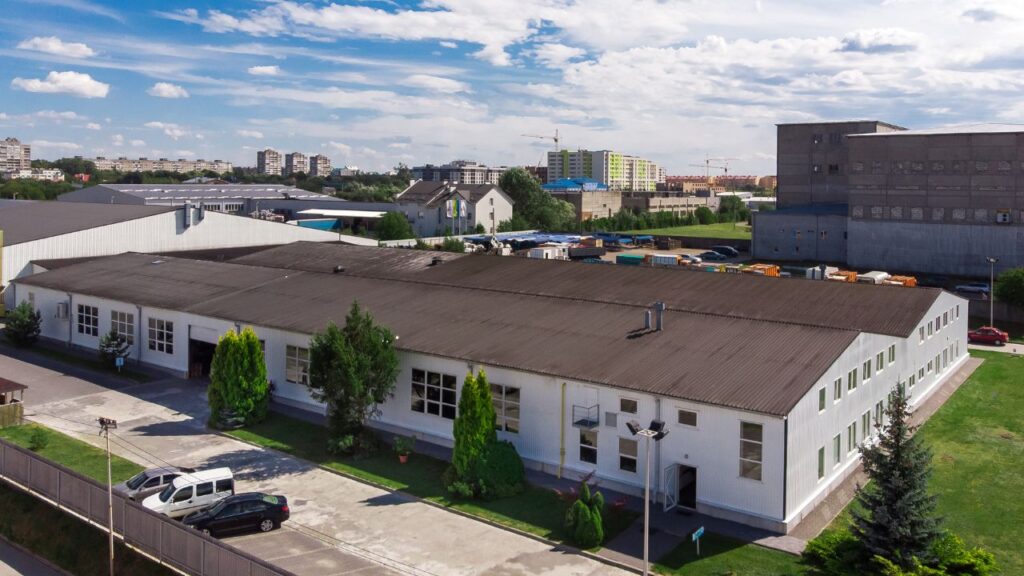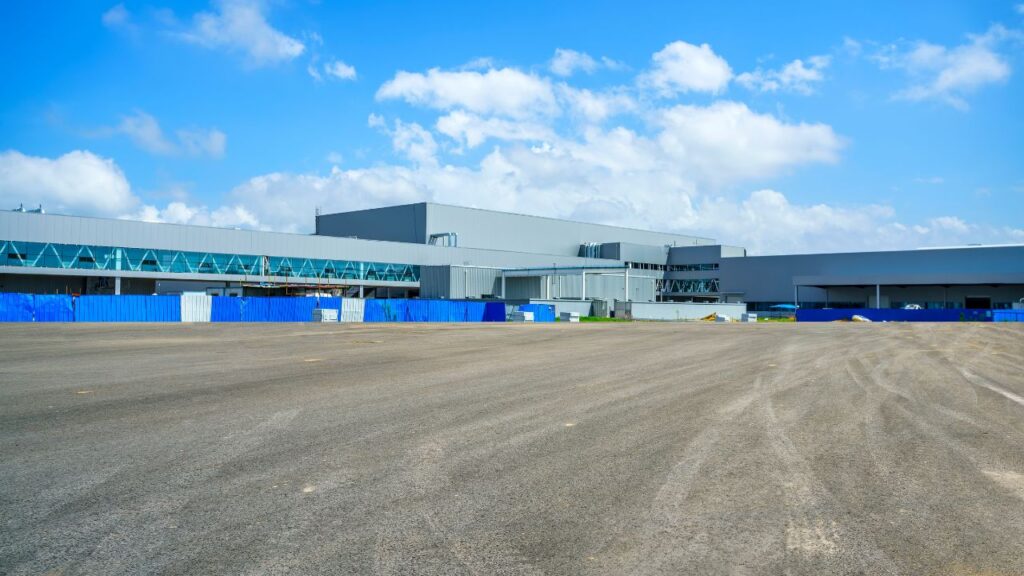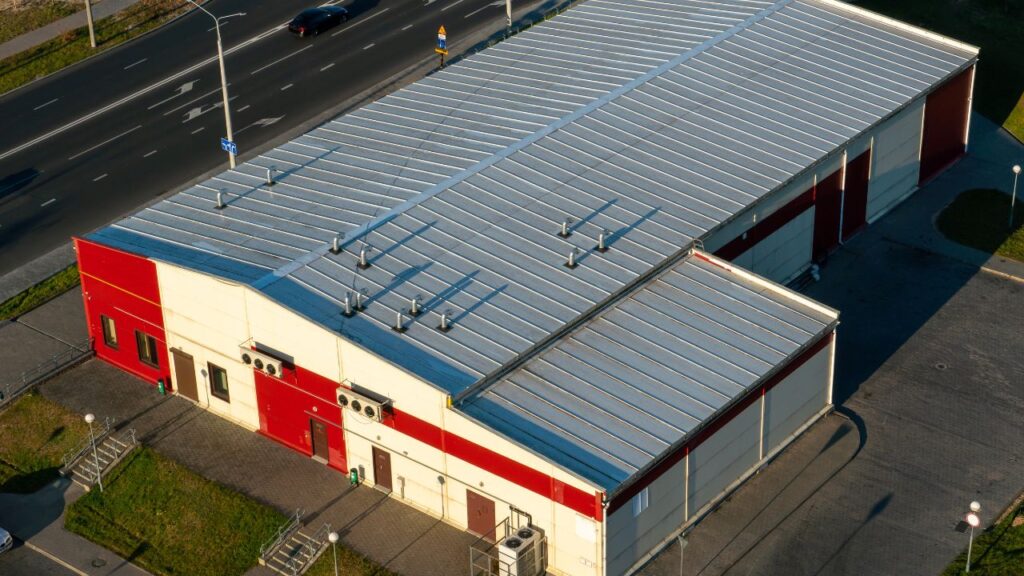Storage Building Cost Estimator
When determining the cost of a storage building in the US, several factors come into play. On average, you can expect to pay anywhere from $20 to $50 per square foot for a basic storage building.
For smaller storage buildings, such as a 10’x10′ unit, you may spend around $2,000 to $5,000. Medium-sized storage buildings, like a 20’x20′ unit, can cost between $5,000 and $11,000. Larger and more specialized storage buildings can range from $11,000 to $60,000 or more, depending on the size, materials, and customization options.

Understanding Storage Building Cost Factors
Before delving into the specifics of estimating costs, it’s crucial to gain a comprehensive understanding of the key factors that exert influence over the expenses associated with constructing a storage facility:
Location Matters
The geographical location of your storage building project is a pivotal determinant of overall costs. Diverse regions exhibit distinct dynamics, including variances in labor costs, adherence to building codes, and ease of accessibility. For instance, opting for a city center location may entail higher labor costs compared to a more suburban setting due to the increased cost of living and demand for skilled labor.
Building Size and Design
The dimensions and intricacy of your storage building directly correlate with its total cost. Larger structures necessitate more materials and labor, which naturally contribute to higher expenses. Moreover, the complexity of design, including unique architectural features or specialized functionalities, can further escalate project costs.
Get Your Storage Building Cost Estimate Today!
Unlock precise cost projections for your storage building project. Try our Storage Building Cost Estimator now to budget with confidence.

Materials and Construction Method
The choice of construction materials and methods wields a considerable impact on the budget. Materials like steel and concrete are favored for their durability and longevity but come with premium price tags. Additionally, the selected construction method—whether it’s a pre-engineered metal system or traditional wood framing—can significantly sway the project’s financial requirements.
Site Preparation
Preparing the construction site involves tasks such as clearing, grading, and ensuring proper drainage. The condition of the selected site and the extent of preparation needed are pivotal factors that can exert substantial influence on your budget. Sites with uneven terrain or poor drainage may necessitate more extensive and costly preparations.
Permits and Regulations
Navigating the intricacies of local building permits and regulations is indispensable. Failure to adhere to these requirements can lead to costly delays and potentially hefty fines. It’s imperative to allocate a portion of your budget specifically for obtaining the necessary permits, conducting inspections, and ensuring compliance with all applicable regulations.
Utilities and Infrastructure
Consider the expenses associated with essential utilities such as water, electricity, and sewage systems. Depending on your location, connecting to these utilities may range from a straightforward process to a substantial investment. The availability and proximity of existing infrastructure can significantly impact the feasibility and cost-effectiveness of your project, warranting careful consideration during the planning stages.
Estimating Your Storage Building Project
Estimating the cost of your storage building project requires careful consideration of various factors. To ensure an accurate estimate, follow these steps:
Define Your Needs
Begin by defining the purpose of your storage building and listing your specific requirements. Are you planning to use it for vehicle storage, as a workshop, or simply for extra storage space? Knowing your needs will help you determine the size and design that best suits your project.
Select a Location
Choosing the ideal location for your storage building is crucial. Consider factors like accessibility and local regulations. Ensure that the chosen location is convenient for your intended use and complies with zoning laws.
Choose Materials
Selecting the right materials is a critical decision in your project. Consider factors such as durability, aesthetics, and, of course, your budget. Each material option comes with its own cost implications, so weigh your choices carefully.
Design Your Structure
Create a design that aligns with your needs and budget. Keep in mind that simpler designs are usually more cost-effective. Work with an architect or designer to develop a plan that optimizes space and functionality while staying within your financial constraints.
Consider Additional Costs
In addition to the basic construction costs, it’s important to account for various additional expenses. These may include:
- Permits: Check with your local authorities to determine the cost of permits and ensure you have all the necessary approvals.
- Foundation Work: Depending on the type of foundation you choose, there may be additional costs. Concrete slabs, for example, require specific preparation and pouring.
- Unexpected Expenses: Be prepared for unexpected costs that may arise during construction, such as unforeseen site conditions or necessary adjustments to your original plan.
Review and Compare
Once you’ve gathered quotes and considered all potential costs, review and compare them to your budget. This step is crucial for ensuring that your project remains financially feasible. If the estimates exceed your budget, you may need to make adjustments to the design, materials, or other aspects of the project.
Common Materials for Storage Buildings
When it comes to choosing the materials for your storage building, you’ll find a variety of options available. Each material has its unique characteristics, benefits, and considerations. Here are some common choices to help you make an informed decision:
Wood
Wood is a traditional and aesthetically pleasing option for storage buildings. It offers a warm and inviting appearance that can blend seamlessly with residential properties. Key points to consider include:

Customization: Wood is highly versatile and can be easily customized to match your design preferences. Whether you prefer a rustic barn-style structure or a classic wooden shed, wood can accommodate various styles.
Maintenance: While wood’s natural beauty is a significant advantage, it may require more maintenance compared to other materials. Regular staining or painting, as well as routine inspections for pests and rot, are essential to preserve the wood’s integrity over time.
Metal
Metal storage buildings are known for their durability and low maintenance requirements. They are an excellent choice for those prioritizing longevity and minimal upkeep. Here’s what you should know about metal storage structures:
Durability: Metal buildings are highly resistant to the elements, including harsh weather conditions, pests, and fire. This durability makes them a preferred choice for industrial and commercial applications.
Low Maintenance: One of the significant advantages of metal buildings is their minimal maintenance requirements. They typically only need occasional cleaning and inspection to ensure they remain in optimal condition.
Customization: While metal buildings are often associated with industrial settings, they can also be customized to have a more residential or aesthetic appeal. Various finishes and color options are available to suit your preferences.
Concrete
Concrete is known for its exceptional strength and durability. It’s often used for larger storage buildings or situations where a long lifespan is essential. Here’s what to consider when choosing concrete as your building material:
Strength: Concrete structures are incredibly sturdy and can withstand heavy loads. This makes them suitable for larger storage needs, such as warehouses or agricultural storage.
Longevity: Concrete buildings are built to last for many years, making them a wise investment for those who need a storage solution that stands the test of time.
Construction Process: Building with concrete may involve a more complex and time-consuming construction process compared to other materials. However, the long-term benefits often outweigh the initial effort.
Insulation: Concrete provides excellent thermal insulation, making it an ideal choice if you plan to climate-control your storage building.
Cost Considerations: While concrete is durable, it may come with a higher initial cost compared to wood or metal. However, the long-term savings on maintenance and replacement can offset this expense.
Construction Methods and Their Impact on Costs
In addition to choosing the right materials, selecting the appropriate construction method for your storage building is crucial. The construction method you opt for can have a significant impact on both the timeline and overall cost of your project. Here are two primary construction methods to consider:
Prefabricated Structures
Prefabricated storage buildings are structures that are manufactured off-site and then transported to your property for assembly. These buildings are designed for efficiency and can offer several advantages, including:
Cost-Effectiveness: Prefabricated structures are often more cost-effective than their custom-built counterparts. The manufacturing process is streamlined, which can lead to savings in both materials and labor costs.
Faster Construction: Since much of the building components are pre-made, assembly on-site is typically quicker. This can significantly reduce construction time, making prefabricated buildings an excellent choice for those looking for a speedy solution.
Quality Control: Prefabricated buildings undergo rigorous quality control measures during the manufacturing process. This ensures that the components are built to exact specifications, enhancing the overall quality and durability of the structure.
Limited Design Flexibility: While prefabricated structures offer a range of design options, they may not provide the same level of customization as custom-built buildings. However, many prefabricated designs can still be tailored to your specific needs and aesthetic preferences.
Custom-Built Structures
Custom-built storage buildings are designed and constructed on-site to meet your unique requirements. While they offer more design flexibility and personalization, they tend to be pricier due to the labor involved. Here’s what you should know about custom-built structures:
Design Flexibility: Custom-built structures offer virtually unlimited design flexibility. You can work with architects and builders to create a storage building that perfectly matches your vision and functional needs.
Tailored to Your Site: Custom-built buildings can be precisely tailored to your property’s layout and terrain, maximizing space utilization and aesthetics.
Labor-Intensive: The construction of custom-built structures involves more labor, as everything is constructed on-site. This can extend the construction timeline and increase labor costs.
Higher Cost: Due to the extensive design and labor involved, custom-built storage buildings tend to be more expensive upfront compared to prefabricated options.
Quality Control: Quality control relies on the expertise and attention to detail of the construction team. Ensure you work with reputable professionals to maintain the highest standards of quality.
Calculate Your Storage Building Costs with Our Estimator
Unlock precise cost projections for your storage building project. Try our Storage Building Cost Estimator now to budget with confidence.

Conclusion
In summary, estimating the cost of your storage building project involves numerous factors, including location, size, materials, and construction method. With costs ranging from $10 to $25 per square foot, careful planning, defining your needs, and obtaining multiple quotes are essential steps to ensure a successful and budget-friendly outcome. Whether you opt for wood, metal, or concrete as your building material and choose between prefabricated or custom-built construction, meticulous consideration of these variables is crucial. Remember, thorough research and compliance with local regulations are key to a seamless project. If you require further guidance or assistance, feel free to reach out to me on Upwork. Your storage building project is on its way to becoming a reality, and I’m here to support your journey.
FAQ: Common Questions About Storage Building Costs
The cost of building a storage building in the US can vary widely based on factors such as size, materials, location, and design complexity. On average, you can expect to pay anywhere from $10 to $25 per square foot for a basic storage building. For example, a 10’x10′ unit may cost between $1,000 and $2,500, while a 20’x20′ unit can range from $4,000 to $10,000 or more. Larger and specialized storage buildings can cost $10,000 to $50,000 or higher.
Several factors influence the cost of a storage building, including:
Location: The geographical location of your project affects labor costs, building codes, and accessibility, which can impact expenses.
Size and Design: Larger and more complex designs require more materials and labor, contributing to higher costs.
Materials: The choice of construction materials, such as wood, metal, or concrete, can significantly influence the budget.
Construction Method: Prefabricated structures are often more cost-effective and faster to build than custom-built ones.
Site Preparation: The condition and preparation of the construction site can impact costs.
Permits and Regulations: Complying with local building permits and regulations is essential but can add to project expenses.
Utilities and Infrastructure: Connecting to utilities like water, electricity, and sewage can vary in cost depending on location and infrastructure availability.
To save money on your storage building project, consider the following tips:
Opt for a simpler design to reduce labor and material costs.
Choose cost-effective materials based on your budget.
Carefully plan the size of your building to avoid excess construction costs.
Obtain multiple quotes from contractors to find competitive pricing.
Account for permits, foundation work, and potential unexpected expenses in your budget.
Common materials for storage buildings include:
Wood: A traditional and customizable option with maintenance requirements.
Metal: Known for durability and low maintenance, ideal for longevity.
Concrete: Offers strength, longevity, and excellent insulation properties.
To estimate the cost accurately, follow these steps:
Define your needs and specific requirements.
Select an ideal location that complies with regulations.
Choose materials based on durability and budget.
Design your structure, considering simplicity to reduce costs.
Get multiple quotes from contractors, ensuring a breakdown of costs.
Consider additional costs, including permits, foundation work, and unexpected expenses.
Review and compare quotes to ensure they align with your budget.
For more tailored guidance, consult with professionals familiar with storage building projects.
Process To Get Storage Building Cost Estimate Report
Here I am going to share some steps to get your storage building cost estimate report.
-
You need to send your plan to us.
You can send us your plan on info@estimatorflorida.com
-
You receive a quote for your project.
Before starting your project, we send you a quote for your service. That quote will have detailed information about your project. Here you will get information about the size, difficulty, complexity and bid date when determining pricing.
-
Get Estimate Report
Our team will takeoff and estimate your project. When we deliver you’ll receive a PDF and an Excel file of your estimate. We can also offer construction lead generation services for the jobs you’d like to pursue further.
Google Reviews





